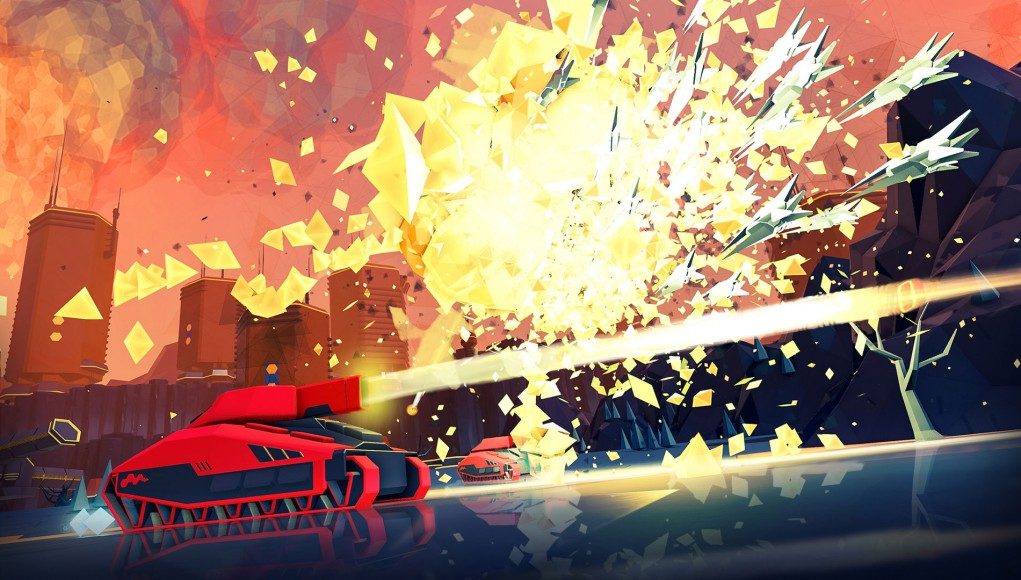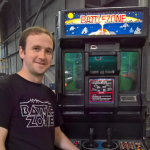Welcome to the 1st in our 3 part series of developer diaries from Rebellion covering the making of the forthcoming PlayStation VR title Battlezone, a reboot of the 1980 Atari arcade classic in virtual reality. In this entry, Senior Designer on Battlezone PSVR Tom Rigby discusses the critical need for human feedback when developing for a brand new entertainment medium.
Guest Article by Tom Rigby
Tom is Senior Designer on Battlezone for PlayStation VR at Rebellion. He is unfortunately old enough to remember playing the original Battlezone in the arcades.
After touring the first playable Battlezone demo back in 2015, we ended up with plenty of feedback. Much of it was extremely encouraging. The Space Mountain-like hangar sequence which opened the game – that was a big hit. Entering the hangar and then ascending into the level, seeing its huge scale from below, were two huge wow moments for everyone.
We also knew we were onto something with the gameplay. The classic tank-on-tank combat was proving a good fit. The swarm, a cluster of flying enemies that flocked around the level, proved a great way of showing off the potential of VR and its impressive 3D effects.
However, obvious improvements soon emerged for the next demo. And they underlined the way that developing for VR poses new challenges, and new ways of overcoming them.
First, an easy change: In the first demo we had tank jumping – yes, tank jumping – and we were convinced people would fly off ramps, leap off cliffs and hop over enemy tanks. Many on our dev team loved the jump feature, especially the way VR made it feel real, almost like a rollercoaster.
Of course, not all members of the press and public enjoyed this more extreme movement. It might seem an obvious thing in retrospect, but in reality it only became an issue outside of our internal testing. With VR, even the seemingly obvious can be difficult to spot from a personal perspective. Since jumping wasn’t required to navigate levels, the poor feedback made removing it an easy decision.
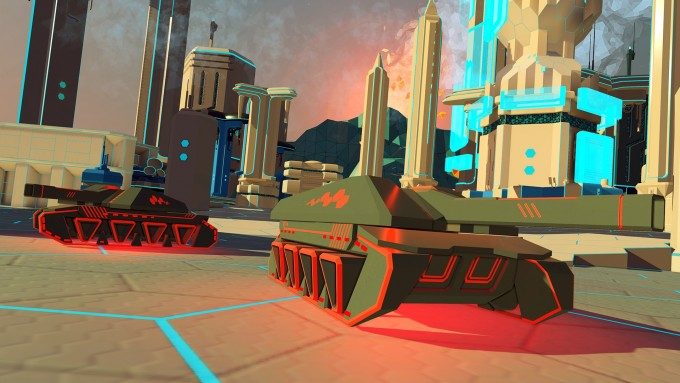
Changing the cockpit was trickier. In the original demo it was a small place, cramped and a bit toy-like. Again, this was the first cockpit we’d ever made for VR and we had no idea what the scale should be, how much of the tank should be visible, or where the weapons would fit. Initially it was largely guesswork.
Crucially, we could only try the cockpit in VR after we’d made it. Something may look fine on a 2D screen, but the second you put it in VR, everything changes!
The first part of the solution was to make a much bigger tank and cockpit. Both changes gave us more room to place screens, levers and weapons, and the cockpit transformed from a static and cramped area into something that felt useful, spacious and dynamic. The player had total control over their tank, but significantly they felt like they did too. And an added benefit was we could now show additional information – such as objectives – on tank monitors. This not only freed up valuable display space but it also encouraged players to look around, which is a vital thing when trying to cement the illusion of VR.
Above: It’s in VR itself that you can truly appreciate the size of the area inside the tank. Monitors with important information are readily in view, and we even bring them closer to the player at crucial points, emphasizing that sense of space.
We also found that we needed to tweak the head position of the player. Various changes were made, but one of the most crucial was the height. Lowering the player’s head gave a greater sense of speed, but it also restricted the view. Conversely, raising it too high lost all sense of speed, making the tank feel sluggish and losing the dynamic feel of the first demo.
The solution here was not terrifically unsurprising – we simply repeated our tweaking until we were happy with the balance. Nonetheless, it proved a crucial adjustment.
Another interesting challenge came from a combination of two things: the opening sequence in the hangar, and multiplayer. As we recently announced, you can play the entire Battlezone campaign in four-player, drop-in-drop-out co-op.
In multiplayer, we needed to have four sequences running side by side, with four identical lifts to take the player out of the hangar and into the first level. All these lifts needed to talk with each other to ensure all the players all exited the hangar at the same time, so the players could look around and see their friends alongside them – another little wow moment. We also added different multiplayer-friendly hangar sequences, featuring unique animations for each player. Look out for our favourite, the window-washing robot!
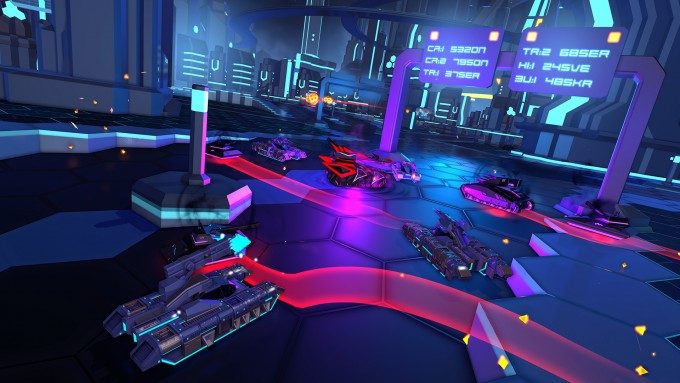
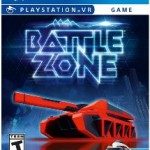
We’ve come a long way as a team since the first demo. Hopefully this is apparent to those of you who have played our newer build at recent shows or perhaps even the game proper. It has been a huge learning experience, and the demos were tremendously useful projects – so thank you for all of your feedback. It’s extremely exciting to be in uncharted territory, and we can’t wait to see what we’ll learn during the next few years of VR.
Our thanks to Tom for penning this diary entry. Battlezone is available to buy now for PlayStation VR.

